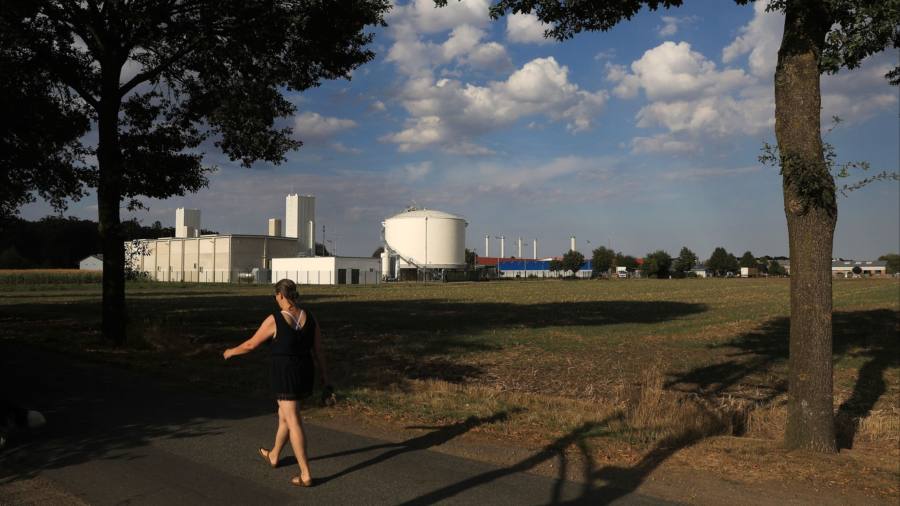Receive free Natural gas updates
We’ll send you a myFT Daily Digest email rounding up the latest Natural gas news every morning.
The EU has hit its gas storage target more than two months ahead of schedule, but analysts warn that a cold winter could lead to volatile prices and Europe scrambling for energy.
Storage levels in the bloc reached 90.1 per cent capacity as of August 16, according to figures updated on Friday by industry data provider Gas Infrastructure Europe (GIE).
That meant they passed the 90 per cent threshold the EU had set for November 1 as it loosens its reliance on Russian energy to see it through the coldest months of the year. The figure was also the highest level for this time of year since 2016, when records began, said GIE.
“This will help us be safe this winter. Together, we are weaning ourselves off Russian gas and we keep working in parallel on more diverse energy supplies for the future,” Ursula von der Leyen, European Commission president, wrote on X, formerly Twitter.
The price of TTF (Title Transfer Facility) futures, the European gas benchmark, fell 2.5 per cent on Friday but remained at elevated levels as analysts warned that high inventories in summer could quickly be depleted in the colder months.
There is not enough storage for all of Europe’s gas demand, and risks such as colder temperatures and global supply disruptions may leave Europe again looking for alternative sources of gas, as it did last year.
Europe has become dependent on buying liquefied natural gas to make up the shortfall since Russia began slashing supplies after its full-scale invasion of Ukraine last year.
“Europe couldn’t risk going into the winter with low storage levels as there is a decline in Russian pipeline supplies compared to pre-war levels and Europe will have to compete for liquefied natural gas in the winter independent of current storage levels,” said Sindre Knutsson, partner at Rystad Energy.
Europe’s newfound thirst for LNG has made it more vulnerable to global energy shocks. One is currently coming from Australia, where potential strikes at LNG export sites, which collectively account for 10 per cent of global supplies, sent the TTF price surging 40 per cent last week.
Australia is a key supplier to Asia, and LNG from the country rarely makes it directly to Europe. But if buyers of Australian gas in Asia need to hunt for alternatives, it will pitch them directly into competition with Europe.
“The drawdown of EU and UK gas storage might cover around 15-20 per cent of winter gas consumption, with winter LNG supply accounting for around one-third, a significant amount,” said Glen Kurokawa of commodity consultancy CRU.
Talks between the Offshore Alliance union and gas majors Chevron and Woodside, operators of the plants, about the strikes will continue into next week, according to people with direct knowledge of the situation.
Workers at Chevron’s Gorgon and Wheatstone sites began casting votes over strike action on Friday and, if the vote passes, the union can decide whether to pursue industrial action later this month if talks fail. The union accused Chevron of running “feudal fiefdoms” in a statement posted on Facebook on Friday.
Woodside said “positive progress” was made during talks last week, with an in-principle agreement made on a number of issues. Chevron said it would continue to engage with the unions.
Additional reporting by Alice Hancock in Brussels


